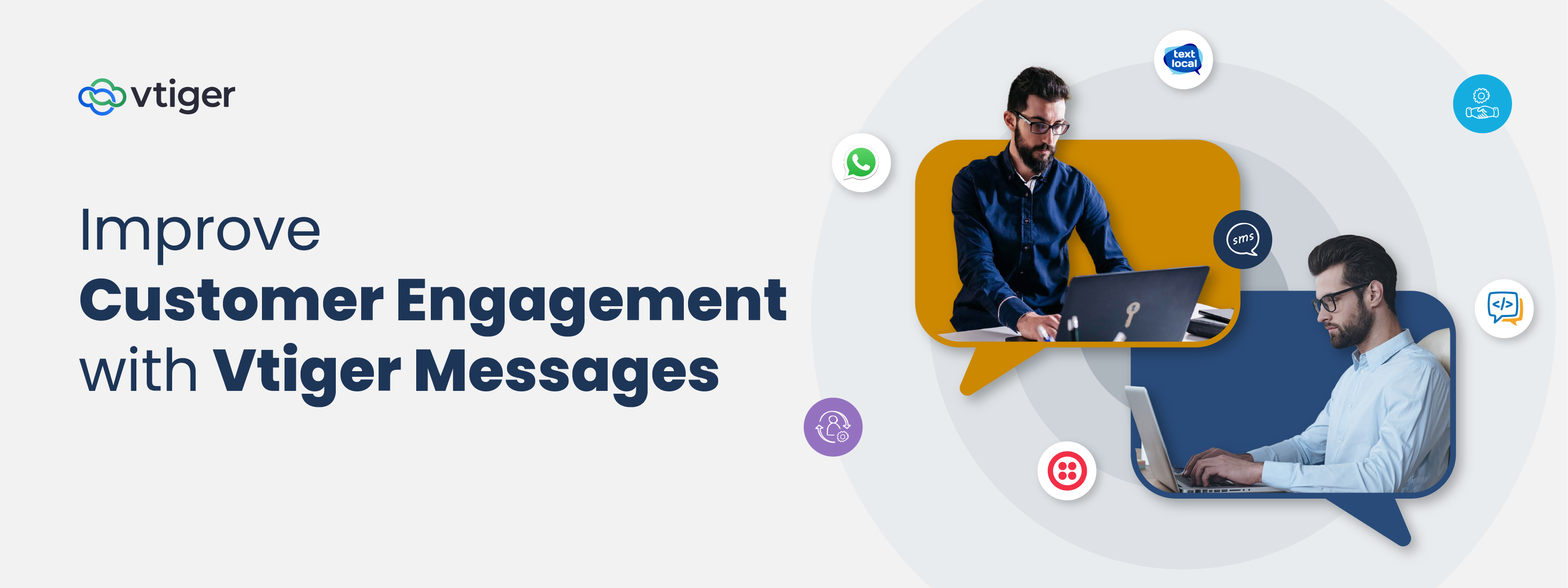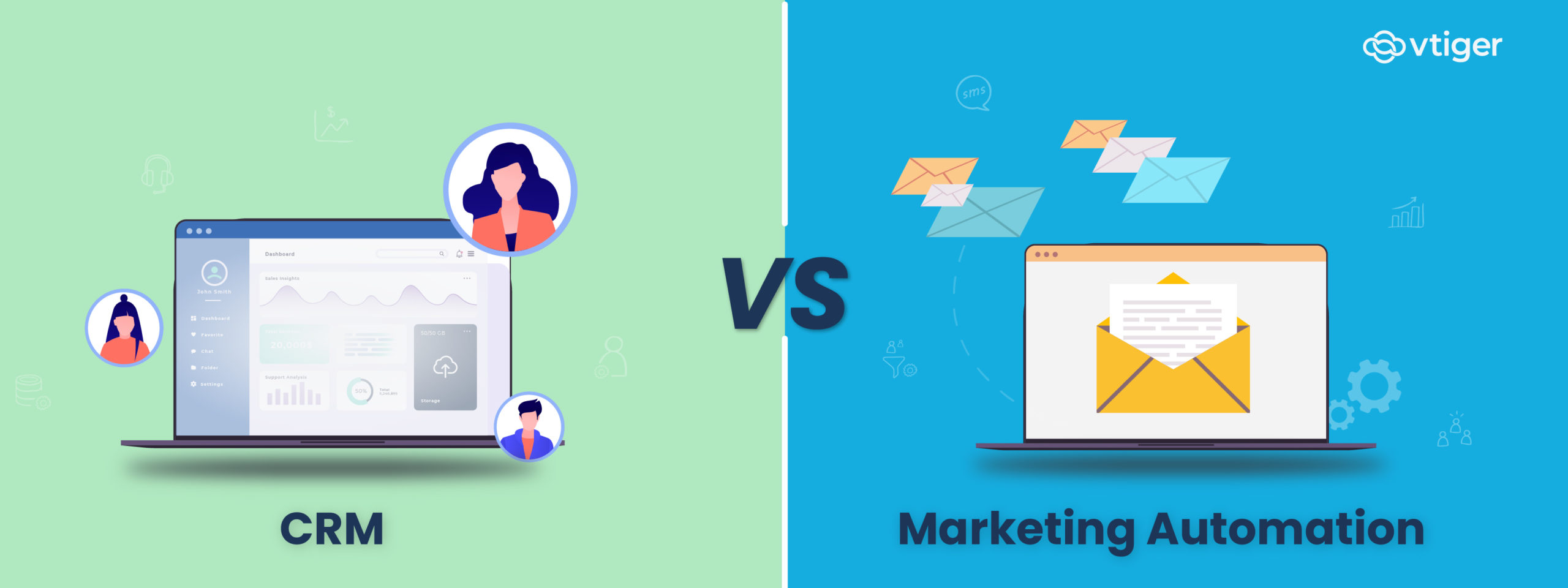It would be a novice mistake to deem marketing campaigns as a simple single-action effort. Global ad spending is expected to reach $992 billion in 2025, a 4.9% increase [1]. In order to maximise impact, businesses worldwide must carefully plan and manage their campaigns, as it is evident that they are shifting towards digital marketing.
As a result, campaign management has now become an important business function. With tools powered by marketing automation and artificial intelligence, brands can reach customers efficiently across multiple platforms and adjust their campaigns in real time.
And with this current shift within the marketing industry; businesses that do not have a strong campaign management strategy risk falling behind competitors who use data-driven, multi-channel marketing to engage customers more effectively.
Read this blog to understand what campaign management is and the steps involved to achieve optimal results, in terms of budget and effort invested.
What is Campaign Management?
Campaign management is the process of planning, executing, and tracking marketing campaigns to connect with the right customers. It involves using specialized software platforms designed to help businesses send messages across different channels like email, social media, and SMS. These platforms automate repetitive tasks such as scheduling posts or sending emails, and provide easy-to-understand dashboards that show real-time results. Many popular tools also let marketers create and adjust workflows without needing to write code, and use artificial intelligence to predict how customers might respond.
For example, a retail brand during a festival might use the necessary software tools to run coordinated email and social media campaigns. By monitoring customer engagement live, the brand can quickly change offers or messages to improve results. This process follows simple steps: plan the campaign, launch it, track its progress, and optimize based on data.
Why is Campaign Management Important?
Campaign management is vital for businesses to meet their marketing goals efficiently. It allows companies to allocate resources wisely by targeting the right audience, which prevents wasted effort and maximizes impact. Using data-driven insights, campaign managers can make informed decisions that improve overall campaign performance.
With the help of modern tools, businesses can track the performance of their campaigns in real-time and adjust strategies quickly to enhance results. This ongoing optimization saves time and resources while boosting engagement and conversions.
A real-world example [2] comes from IBM, whose multi-channel campaigns combined analytics and personalization. This approach significantly increased customer engagement and sales, demonstrating the power of effective campaign management.
At the same time, businesses must balance personalization with privacy regulations like GDPR. Following these rules protects customer data and maintains trust while still delivering relevant marketing messages.
Key Objectives of Campaign Management
Effective campaign management begins with well-defined goals that directly support your business priorities. The following objectives act as the strategic compass for every decision:
- Increase brand awareness – Expanding reach and improving brand recall ensures that more potential customers recognize and remember your business. This can be measured through surveys, social media mentions, and search interest trends.
- Generate leads – Well-structured campaigns attract prospective buyers, creating new sales opportunities. Lead generation metrics help assess the quality and volume of these prospects.
- Drive sales – Converting leads into purchases fuels revenue growth. Dashboards can show sales uplift linked to specific campaigns, enabling faster ROI analysis.
- Improve engagement – Higher interaction rates, can foster stronger loyalty and repeat purchases.
- Launch new products – Strategic campaigns introduce offerings to the market, accelerating adoption and positioning them effectively against competitors.
Clear objectives create a feedback loop that shapes campaign execution, ensuring every activity contributes directly to measurable business outcomes.
Types of Marketing Campaigns You Can Manage
Modern omnichannel campaign management platforms allow businesses to design, execute, and monitor diverse campaign types from one centralized hub. Each campaign type requires its own set of workflows, creative approaches, and measurement strategies, which is why adaptability in your tools is essential:
1. Email Marketing Campaigns
Email campaigns continue to be one of the most affordable and measurable forms of marketing. They enable personalized communication at scale and can drive high conversion rates when designed thoughtfully.
Amazon (a famous e-commerce platform) sends targeted emails with curated deals, exclusive coupons, and product recommendations based on past purchases during the festive season.
2. Social Media Campaigns
Social platforms offer unmatched reach and allow for both organic engagement and paid promotions. They are ideal for building brand visibility and fostering interactive connections with audiences.
Nike’s influencer collaborations on Instagram feature targeted ads and discount codes.
3. Product Launch Campaigns
Launching a product requires creating anticipation, building awareness, and encouraging early adoption. These campaigns often span multiple channels for maximum impact. Tata Motors uses teaser ads, social media reveals, live-streamed press events, and pre-booking offers to drive momentum before the actual launch.
4. SEO and Content Marketing Campaigns
These campaigns focus on generating long-term organic visibility through search engines and authoritative content. They are particularly effective for building trust and reducing dependency on paid ads. Fintech startups create blog posts, how-to guides, and explainer videos optimized for local search terms, helping them rank high in Google search results.
5. Event-Based Campaigns
Events provide high-impact touchpoints for direct engagement, community building, and instant sales surges. Whether hosted online or offline, they give brands a stage to connect meaningfully with their audience. From any quick commerce brand’s seasonal food festivals to your local store’s Black Friday sale, these events create buzz, attract heavy footfall, and ignite online chatter. With CRM integration, attendee details can be captured to send timely follow-up offers and build lasting relationships.
Steps in the Campaign Management Process
Modern campaign management is a structured yet flexible cycle, where each stage feeds into the next while allowing for continuous improvements. Today’s processes are supported by advanced software, often with AI features that help in segmentation, budget allocation, and performance forecasting. Platforms like Vtiger illustrate how AI-enhanced monitoring can reduce the time between identifying an issue and making adjustments. Below is a step-by-step guide:
1. Define Goals and KPIs
Begin by deciding exactly what you want the campaign to achieve. This could be more website visits, increased sales, or greater brand recognition. Set KPIs (key performance indicators) such as conversion rate or cost per acquisition to measure success.
2. Identify Target Audience
The right message to the wrong audience is wasted effort. Study your CRM data, purchase history, and web analytics to uncover your most responsive segments. AI-based tools can help by detecting patterns such as seasonal buying behavior or cross-product interest. Think beyond basic demographics; include motivations, pain points, and lifestyle habits.
3. Choose Marketing Channels
Once you know your audience, pick the platforms where they naturally engage. Younger urban audiences might be active on Instagram and YouTube, while B2B buyers may respond better to LinkedIn or targeted email campaigns. Your choice of channels should match both audience habits and campaign objectives.
4. Budget Planning
Allocate your funds strategically. Some channels demand higher upfront investment (like paid ads), while others require more time than money (like organic social media or SEO). Consider both production costs and distribution costs. A flexible budget lets you reallocate funds mid-campaign if a channel is overperforming.
5. Campaign Creation and Launch
This is where strategy becomes reality. Design creative assets that reflect your brand voice and resonate with your audience personas. Ensure all copy and visuals are adapted for each platform. Plan your launch date to align with high-engagement periods; for example, festive seasons, industry events, or product anniversaries.
6. Monitor and Optimize
Campaign management software provides real-time dashboards where you can watch your KPIs move. If a social ad is getting clicks but not conversions, tweak the landing page. If email open rates are low, experiment with subject lines or sending times. Optimization is a continuous process during the campaign, not just after it ends.
7. Analyze Results and Report
After the campaign, gather data from all channels in one place to evaluate performance against your original KPIs. Look at both quantitative metrics (sales, leads, traffic) and qualitative insights (customer feedback, social sentiment). This post-mortem helps refine future strategies and prevents repeating mistakes.
Common Campaign Management Challenges (and How to Solve Them)
Even the most advanced campaigns face roadblocks that can reduce impact and drain resources. Common issues include unclear objectives, poor audience targeting, limited budgets, and inconsistent messaging. These challenges often arise when manual workflows collide with the speed and complexity of modern digital marketing.
Today, AI-driven tools can address many of these gaps by automating segmentation, forecasting budgets, and checking message consistency across channels. Addressing these issues early can create smoother workflows, better audience engagement, and higher returns on investment.
Challenges and Solutions Table
| Challenge | Why It Happens | Practical Solution & Tools |
| Lack of Clarity on Objectives | Teams sometimes rush into execution without agreeing on specific goals or success metrics. This causes fragmented efforts and no clear way to measure impact. | Apply the SMART goal framework and define KPIs like conversion rate or cost per acquisition before launch.. |
| Poor Audience Segmentation | Relying only on basic demographic filters overlooks deeper behavioral and interest-based patterns, leading to irrelevant messaging. | Use segmentation tools to identify micro-audiences based on past purchases, engagement behavior, and predicted interests. |
| Limited Budget or Tools | Smaller teams or startups often cannot afford premium software or extensive ad spends, reducing campaign reach and effectiveness. | Start with affordable SaaS options for design, email marketing, and social scheduling. Track ROI closely to reinvest in the best-performing channels. |
| Inconsistent Messaging | When multiple teams or channels are involved, messages can become misaligned or off-brand, confusing the audience. | Use centralized asset management systems to store approved templates, brand guidelines, and creative assets for uniform messaging. |
CRM and Campaign Management: Sales and Marketing Alignment
When sales and marketing teams operate in silos, opportunities fall through the cracks.
A lead clicks on a campaign ad, downloads a brochure, and shows genuine interest, but if that behavior isn’t tracked and passed to sales at the right time, the momentum is lost. However, when you integrate your campaign management activities with a CRM software, the outcomes will dramatically change!
It creates a shared reference point where every click, email open, and form submission becomes actionable intelligence for the sales team. Here is how this integration actually aligns marketing and sales operations:
Turning Campaign Data into Sales Intelligence
When campaign performance data flows directly into CRM records, sales teams get context; not just contact information. Instead of cold outreach, they engage leads based on actual behaviors and preferences.
Key benefits:
- Lead Scoring Accuracy – Behavior-based scoring (e.g., webinar attendance, email click-throughs) identifies sales-ready prospects.
- Personalized Outreach – Sales reps can modify their conversations using campaign engagement history.
- Shorter Sales Cycles – Timely follow-ups prevent lead drop-off and competitor poaching.
Closing the Marketing-to-Revenue Loop
Without integration, marketing teams can’t prove which campaigns generate real sales. CRM mapping, preferably by open source CRM (with personalized data scrapping scopes), changes that by linking campaign touchpoints to deal closures.
Tactics for impact:
- Pipeline Stage Mapping – Match campaigns to lead nurturing, proposal, and closing stages.
- Attribution Reporting – Identify campaigns with the highest ROI and replicate their success.
- Forecast Accuracy – Campaign-to-sales data improves revenue predictions.
Best Practices for Successful Campaign Management
A focused set of principles helps campaigns perform better over time. These best practices combine technology, cultural alignment, and measurement innovations to keep campaigns relevant and accountable.
- Centralized Campaign Asset Management
Consistency fuels brand trust. Using centralized asset management systems ensures all creatives, copy, and campaign elements follow brand guidelines. This prevents mismatched messaging, supports regional customization, and enables seamless scaling of campaigns while preserving a unified brand identity.
- Set SMART goals tied to business KPIs.
Every high-performing campaign begins with clearly defined SMART goals; specific, measurable, achievable, relevant, and time-bound. By setting these parameters, brands can track progress effectively, link activities to business KPIs, and adjust strategies with precision. Whether targeting increased conversion rates, boosting customer engagement, or enhancing brand recall, SMART goals provide the roadmap to measurable success.
- Use AI-based testing and optimization:
AI-driven tools are transforming how marketers experiment and refine campaigns. From multivariate testing to automated A/B experiments, AI accelerates learning cycles, ensuring messages reach the right audience with maximum relevance.
- Automate Repetitive Marketing Tasks
Automation has moved beyond scheduling posts; it now enables dynamic ad placements, real-time email personalization, and centralized asset distribution across channels. This streamlines workflows, minimizes human error, and frees up marketing teams to focus on high-value creative and strategic initiatives.
- Plan Strategically and Execute Fast
Modern marketing requires a hybrid approach; long-term strategic planning combined with agile execution. This means building annual roadmaps but also running short, iterative sprints to respond to real-time data. Technology-enabled continuous feedback loops allow for rapid pivoting, ensuring campaigns stay relevant in fast-changing markets..
- Enhance Regional Customization and CRM Segmentation
Personalization goes beyond name tags in emails. Leveraging CRM segmentation allows brands to create hyper-targeted messaging for different audience groups based on location, behavior, and purchase history. Regional customization also adapts visuals, language, and offers to resonate with local markets; boosting engagement and conversion rates.
- Integrate Sustainability Into Marketing Narratives
Sustainability is a competitive advantage. Demonstrate how brands can merge environmental responsibility with brand storytelling, strengthening customer loyalty and market positioning.
- Bridging Gaps With Advanced Measurement Models
While click-through rates and ROAS provide short-term clarity, measuring indirect or long-term brand effects remains a challenge. Advanced attribution models incorporating Customer Lifetime Value (CLV), sentiment analysis, and multi-touch attribution can give brands deeper insights into their sustained market influence.
How Campaign Management Supports Business Growth
Campaign management is not just a marketing function. It has become a direct driver of revenue and market reach, especially for small and medium-sized enterprises, emerging startups, and region-focused brands.
Modern cloud-based software, often available on a subscription model, allows even a small local store to design, launch, and track sophisticated campaigns without requiring an in-house marketing department.
Empowering Small and Medium Businesses
Small businesses can now compete with larger corporations by using campaign platforms that scale according to their budget and needs.
- Access to easy-to-use mobile apps for campaign setup
- Low-cost tools with built-in templates for quick launches
- Data tracking to understand which products sell best in different seasons
Strengthening E-commerce and Regional Brands
E-commerce businesses benefit from targeted campaigns that promote the right product to the right customer at the right time. Regional brands can customize their marketing for local festivals, languages, and cultural trends.
- Campaigns in native languages for better audience connection
- Offers linked to seasonal shopping patterns and local traditions
- Price-sensitive promotions designed for specific regions
| Further Reading Suggestions | ||
| What is a CRM | All-in-one CRM | Mobile CRM |
| How CRM works | Sales CRM | What is AI CRM |
| Evolution of CRM | Analytical CRM | All-in-one CRM |
| Collaborative CRM | Mobile CRM | What is the CRM Process |
Conclusion
Campaign management has changed how businesses do marketing by making it simpler and smarter. It helps companies plan and run campaigns that reach the right people at the right time, so they get better results without wasting money. This way, businesses can grow more easily even with tight budgets. To make the most of these benefits, it is a good idea for businesses to use professional tools like a Marketing CRM or get help from experts who understand your specific needs.
Reference
- https://www.campaignindia.in/article/groupms-tyny-2025-indias-advertising-market-to-grow-7-digital-dominance-cont/500722
- https://www.ibm.com/case-studies/the-works-watson-customer-engagement-email-sales-automation
Frequently Asked Questions (FAQs)
Campaign management is the process of planning, executing, monitoring, and refining marketing campaigns. It helps businesses organize all promotional activities efficiently, ensuring that marketing efforts align with goals like increasing sales or brand awareness. It uses tools and data to improve results throughout the campaign lifecycle.
No, campaign management benefits businesses of all sizes. For SMEs and startups, it helps make the most of limited budgets by targeting the right audience and optimizing campaigns. Proper management ensures even small businesses can compete effectively and achieve measurable marketing success.
A campaign manager oversees every stage of a marketing campaign. They coordinate strategy, creative work, and execution while tracking progress and performance. They make data-driven decisions to adjust campaigns on the fly, improving results and ensuring marketing objectives are met.
Choosing channels depends on knowing where your target customers spend time and how they engage. For example, younger audiences may prefer Instagram or YouTube, while professionals might be on LinkedIn. Research your audience preferences and align channel choices with campaign goals for better impact.
Many campaign management tools offer affordable plans or free versions designed for small businesses. These solutions simplify campaign setup and tracking without requiring big budgets or technical skills, making data-driven marketing accessible to SMEs and startups.
Success is measured by comparing results against goals like sales increase, leads generated, or website visits. Use key performance indicators and real-time analytics to understand what works and what doesn’t, helping to improve future campaigns and maximize marketing ROI.
A marketing campaign is a focused set of promotional activities aimed at achieving a specific goal. Campaign management is the ongoing process that plans, executes, monitors, and improves these campaigns to ensure they deliver the intended business outcomes efficiently.
Campaigns should be monitored continuously and reviewed frequently, ideally daily or weekly depending on scale. Quick adjustments in response to data allow marketers to fix problems early, improve engagement, and optimize budget use throughout the campaign period.
Yes, many businesses outsource campaign management to marketing agencies or freelancers. This provides access to expert skills and advanced tools without hiring full-time staff. Outsourcing can be cost-effective and bring fresh perspectives, especially for companies new to digital marketing.
Popular free tools like Google Analytics for tracking, Mailchimp for email campaigns, and Vtiger CRM for managing contacts let businesses start running and monitoring campaigns at no cost. These platforms offer essential features suitable for beginners and small teams.



